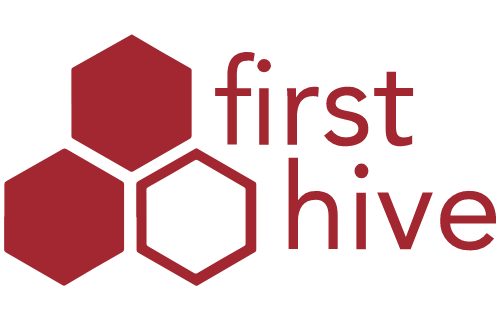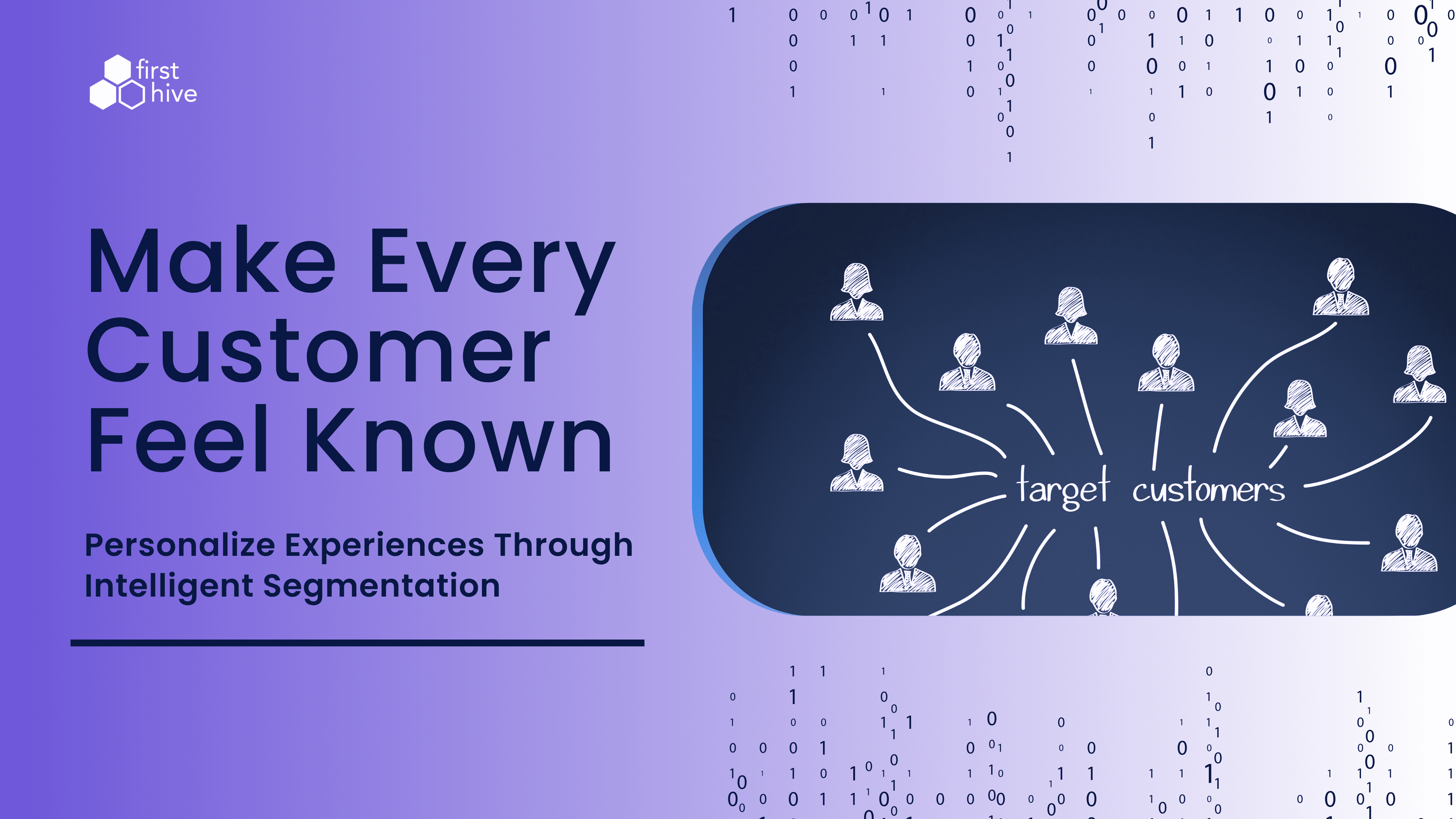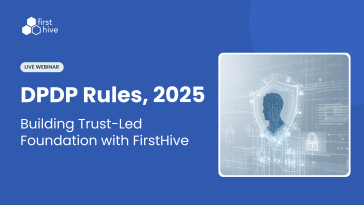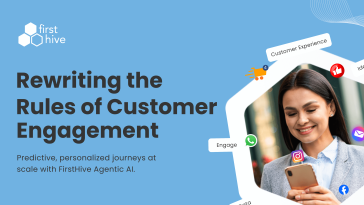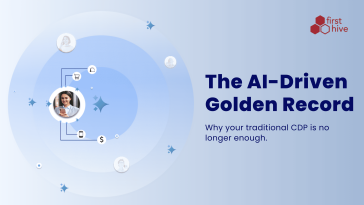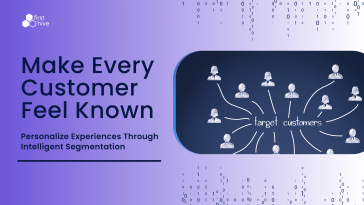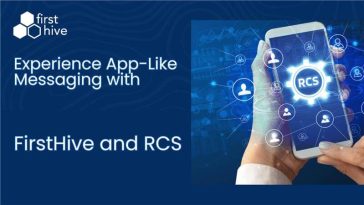Imagine walking into a store where everything—from the product selection to the offers and messaging—feels like it was made just for you. That’s not magic. That’s smart segmentation. Today’s best-performing brands aren’t just talking to customers. They’re talking to the right customers, in the right way, at the right time. And customer segmentation is what makes that possible.
Well-executed segmentation doesn’t just improve marketing efficiency—it transforms customer experience and drives measurable business impact. Brands that move beyond generic messaging and tailor their outreach to specific audience groups consistently see higher engagement, better conversion rates, and stronger customer loyalty.
What is Customer Segmentation?
Customer segmentation is the process of dividing your audience into distinct groups based on shared characteristics, behaviors, or predicted value. It helps you tailor your marketing strategies to what matters most for each group, creating personalized experiences at scale. But not all segments are equal—and not all segmentation strategies lead to growth. The most effective segmentation is value-driven, not just data-driven. Let’s explore how.
Types of Segmentation—and the Value They Unlock
Segmentation is more than just filtering data into categories. Each type of segmentation allows marketers to tap into a different dimension of customer understanding—and when applied with purpose, each one can unlock tangible business value. Let’s break down the key types of segmentation and how they contribute to more intelligent, effective marketing:
1. Demographic Segmentation
What it is: Grouping customers by basic traits like age, gender, income, location, education, or profession. Why it matters: A foundation for broad personalization. Useful for identifying high-level audience clusters or aligning product-market fit. Value insight: Helps you avoid irrelevant messaging (e.g., pushing luxury products to budget-sensitive shoppers) and better align creative, tone, and channel strategy by audience archetype.
2. Psychographic Segmentation
What it is: Segmenting based on personality, values, attitudes, lifestyle, and motivations. Why it matters: Enables emotional resonance. Lets you connect with what drives purchase intent beyond surface-level data. Value insight: Brands that align with customer values (e.g., sustainability, innovation, self-expression) build stronger loyalty and higher engagement.
3. Behavioral Segmentation
What it is: Grouping users based on how they interact with your brand—site activity, purchase frequency, campaign clicks, etc. Why it matters: Reflects real-time intent and interest. Behavioral data reveals what customers actually do, not just what they say. Value insight: Enables timely interventions—like re-engagement nudges, abandoned cart emails, or cross-sell recommendations based on browsing or buying behavior.
4. Journey-Based Segmentation
What it is: Classifying users by where they are in their lifecycle—from new prospects to loyal advocates. Why it matters: Different stages demand different messages. You don’t pitch a discount the same way to a new user as you would to a long-term VIP. Value insight: Aligns communication with customer intent—boosting conversion and reducing churn.
5. Value-Based Segmentation
What it is: Identifying and prioritizing users based on their revenue contribution or long-term potential. Why it matters: Helps you focus your efforts and budgets where they’ll have the highest return. Value insight:
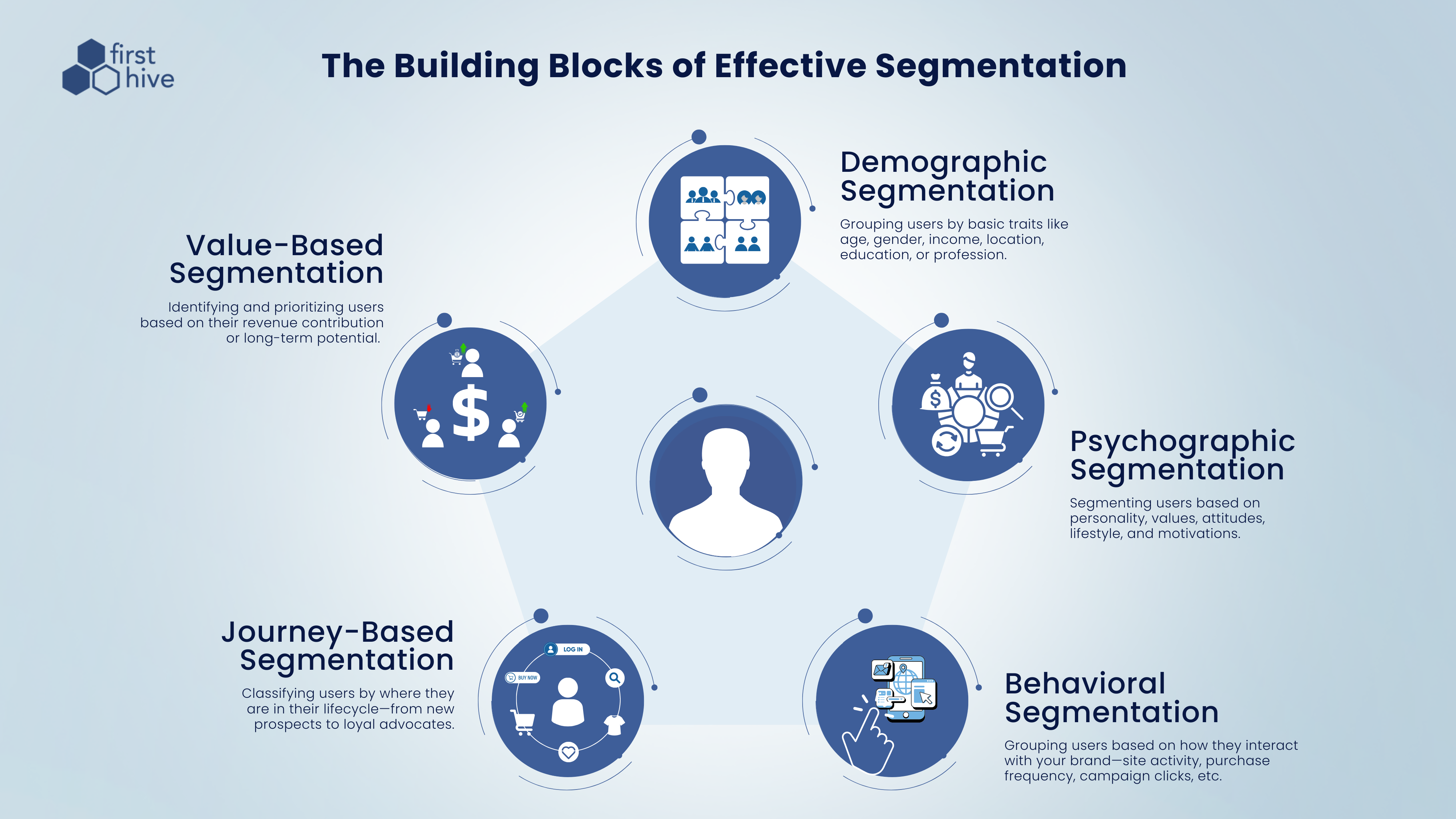
How FirstHive Brings Intelligent Segmentation to Life
While segmentation frameworks provide direction, it’s technology that powers their execution at scale. FirstHive enables marketers to move beyond fragmented lists and outdated targeting with a platform that unifies data, automates logic, and delivers both precision and adaptability. Here’s how FirstHive turns segmentation strategy into reality—without requiring teams to be data scientists.
Segment Based on Custom Rules and Live Data
Use Case: Create a live segment of all users who purchased skincare products in the last 30 days but haven’t engaged with any new launches. How it works: Set dynamic conditions using customer attributes and behavioral signals. Segments automatically update as new data flows in—perfect for recurring campaigns like replenishment reminders or seasonal nudges.
Predict Customer Intent Using AI
Use Case: Identify which dormant users are most likely to convert if re-engaged—and which ones aren’t worth pursuing. How it works: FirstHive’s machine learning models analyze historical behavior to predict outcomes like conversion, churn, or engagement likelihood—helping marketers prioritize high-potential actions and reduce wasted effort.
Discover High-Value Lookalikes Using First-Party Data
Use Case: Launch a campaign targeting users who resemble your highest-spending customers—without relying on third-party cookies. How it works: FirstHive identifies traits of your most valuable customers and finds similar users within your own ecosystem, helping you scale success using your data, not rented audiences.
Align Campaigns with the Customer Journey
Use Case: Welcome new users with onboarding content, re-engage lapsed buyers, and reward repeat customers—all within one unified journey. How it works: Segment users based on lifecycle milestones, purchase recency, or frequency. Trigger campaigns dynamically as customers move through different journey stages.
Each of these approaches can be executed using FirstHive’s no-code Segment Builder, which allows teams to:
FirstHive in Action: Segmentation that Drives Outcomes
Customer segmentation isn’t just a marketing tactic—it’s a strategic growth lever for businesses aiming to stay competitive in today’s experience-driven marketplace. With the right approach, segmentation unlocks deep customer understanding, sharper targeting, and more meaningful engagement across the entire customer journey. FirstHive CDP makes it easier than ever to move beyond basic filters and static lists—empowering marketers with AI-powered insights, dynamic audience creation, and real-time personalization at scale.
Ready to transform your customer data into a competitive advantage?
Our experts are standing by to design a custom segmentation strategy tailored to your business goals. Talk to our experts and see FirstHive in action. Schedule a demo today.
